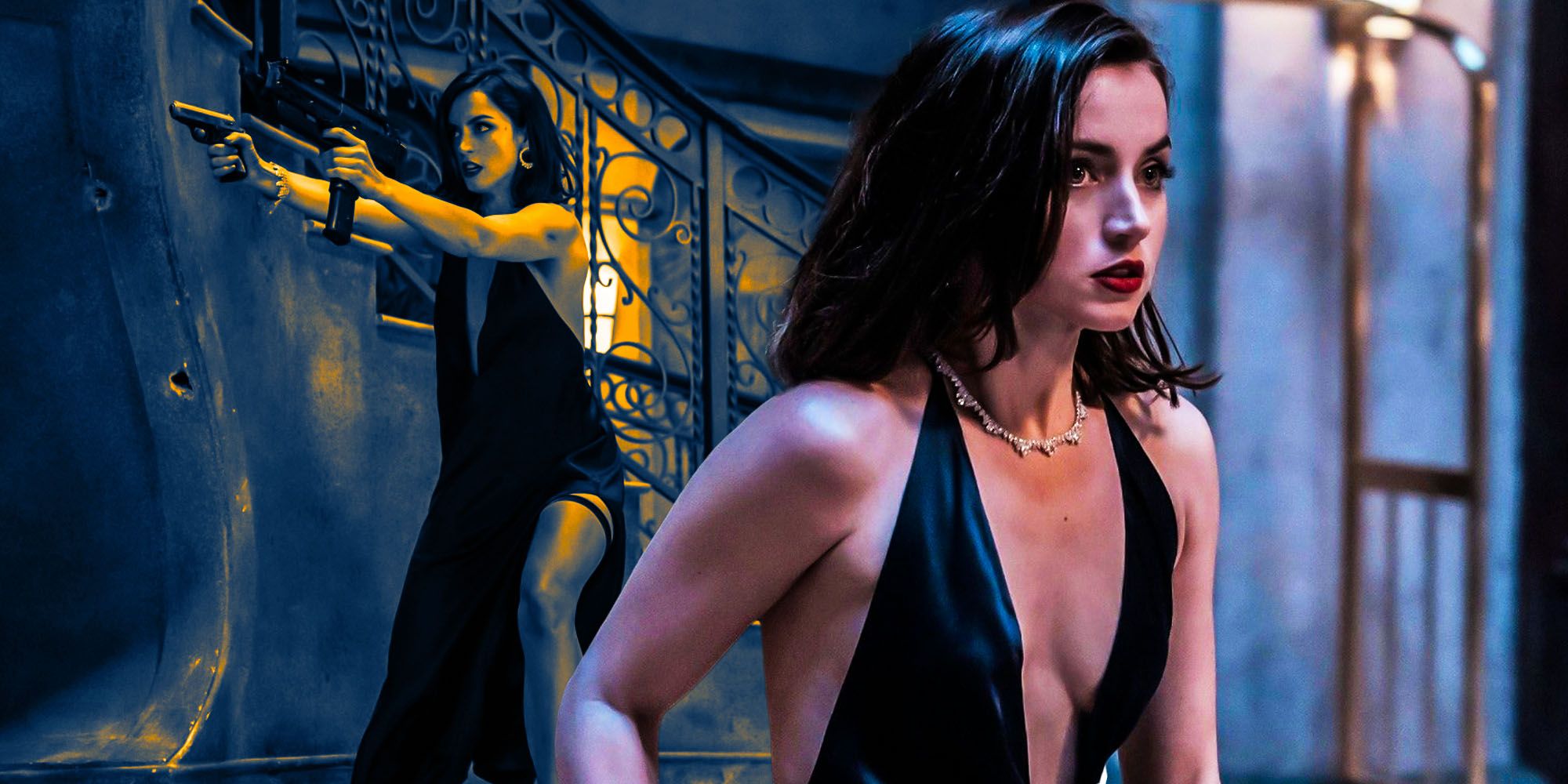No Time to Die’s bright-eyed CIA agent, Paloma (Ana de Armas) graces the screen for a small but perfect role, dazzling both audiences and James Bond himself. The new movie closes out the Daniel Craig-era of James Bond and ties up loose ends from earlier films like Casino Royale and Spectre. Featuring a villain with a biological weapon and some thrilling IMAX cinematography, No Time to Die proves to be a great reason for people to return to the movies after nearly two years of watching them at home.
James Bond first meets Paloma as his CIA contact in Cuba. There, she helps him sneak into a secretive gathering of the evil organization, SPECTRE. The meeting turns out to be a trap meant to kill Agent 007, but when things don’t go the way SPECTRE planned, Bond and Paloma make a daring escape featuring some incredible fight choreography and delightful banter as the agents shoot their way out. Though Paloma is gone as quickly as she came, she steals the show and makes a profound impact on 007 that shapes his choices over the rest of the movie.
Making Paloma a major character could have diminished the fun of her scene. Paloma packs a huge punch with her combat skills, wit, and charm, but to continue that energy throughout the rest of the movie could have gotten repetitive, and Paloma might have ended up as a disappointing parody of what audiences love about her. The writers were right to leave people wanting more rather than less. Even though Ana de Armas’ has proven herself more than capable of carrying a movie franchise on her own, a great side character isn't great because they can launch a spin-off. A great side character helps propel the protagonist along on his or her emotional and narrative journey, which is exactly what Paloma does for James Bond in No Time to Die.
Bond's own life and career were fueled by duty, loss, and struggle. But there was also adventure, discovery, and sometimes, even joy. For a fleeting moment, fighting side-by-side with Paloma, James Bond – and the audience – get to remember just how much fun he had being a spy, and he sees that same thrill in Paloma. Paloma is a reminder of the brash secret agent that James Bond was in Casino Royale. She’s not just great at her job, she revels in it. Paloma may be starstruck by the great Agent 007, but when he looks at her, Bond sees his legacy. Paloma is living proof that there will always be people like James Bond, ready and waiting to do the great work of defending the world from danger.
A recurring theme of the Daniel Craig-era is James Bond's existential struggle to find relevance protecting a world that is changing faster than he is able to keep up with. This iteration of the super-spy came of age too late to fight in the Cold War era that defined many versions of James Bond and too early to see the possibility of a brighter future ahead. After his encounter with Paloma – a face to put to that future – Bond becomes more selfless. He takes bullets, both literal and metaphorical, for the sake of others. He makes offerings of himself, not to be a hero, but as an act of love; to pave a path to that brighter future for the people who will follow.
Bond is burdened in No Time to Die by what he sees as his personal failure to save the world until he is inspired by the arrival of a young adventurer with the same spirit that once drove him. Like Luke Skywalker in The Last Jedi, it's only in hindsight that Bond realizes he was never meant to save the world, but to be a bridge to the next generation of defenders. He comes to accept that while his time is passing away, the time of Paloma and her peers is just beginning.


